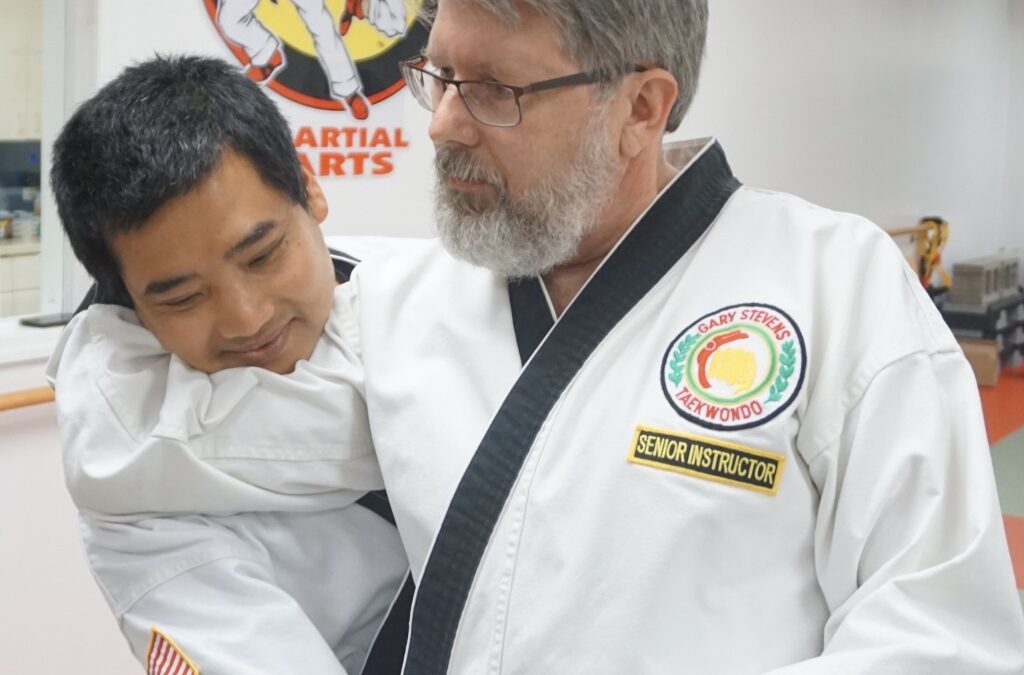SOME BRIEF THOUGHTS ON THE MEANING OF FORMS
There are no secrets—everything is hidden in the open
If we regard the forms that we practice as a syllabus- with a definite-if not clearly defined progression of techniques and principles, what then is the progression?
I suppose it can be: movement education, techniques, applications, energetics (e.g. Chi Kung), philosophy, personal growth, sporting athleticism, or even pure aesthetics, as in a dance choreography. While none of these can be separated completely, the emphasis can shift.
Since I usually am drawn to the principles and applications, this discussion will be concerned with those.
At some point in this progression we would ideally place most emphasis on movement education. These movements would be given names that provide some explanation as to their function, so that the student would have a conception of what he was attempting to do.
I am picking Palgwe IV as a starting point. it is an older form, created at the same time as the Kukki black belt forms—more on that later. While it has been largely supplanted in most schools by the newer Taegeuk, it remains a vestige of the older conception of Taekwondo Do, i.e. when it was more concerned with fighting and had less of a sporting element.
To me, this form is really the beginning of the teaching of actual applications that the student is expected to learn. While the movements from the earlier forms can be used combatively, for the most part they are strung together to demonstrate movement, technique execution, and proper weight shifting.
Its debt to the Heian/Pinan series is obvious from the first moves. This however, does not detract from its value.
Here is the question: If the motions and some of the applications appear in later more advanced forms (notably Taebek) what has changed? Is it the form, or is it us?
Since this form is not as well-known as the newer ones I will put the movements in front of the applications

the opening ready stance
Sidebar: many forget that this opening stance incorporates both a defense and attack at the same time. The most vulnerable points on the legs are on the inner surface, so the feet rotate in to protect them. The pelvis posteriorly tilts to remove the curve of the lower back (lordosis), and the hands come forward to help guard the lower body. It really does mean “Ready”.



The first three moves of the form actually describe how to strike the head of your opponent whether he holds his lead arm high, middle. or low.



lead arm high middle low ` note: knife hand can be thrown to either side)
The next three moves consist of a double knife hand block, front kick, and forward spear hand.


Let’s stop and take a look at an unusual application of that spear hand. First, we have to forget about it being used as a striking tool, and begin to think of it as a really good entry tool. The forward thrusting arms allows it to penetrate past narrow sections to get to the other side.
We take the rear arm and use it to press down your opponent’s arms and thrust your spear hand the arm on the opposite side of his body—simply walk through and past
him. He will go crashing down to the ground. You have just completed a “spear hand throw”!

the next moves are quickly withdrawing the spear hand. placing it on your lower back, rotating towards your back, completely around to a front stance forward hammer fist.
Now here is where I would like to concentrate on the idea of transmutation—by choosing three different ways of looking at this sequence. I will try to sort them by level of complexity.


Level One:
this is usually demonstrated for students at the belt level who are learning this form.
Your wrist is grabbed. Instead of pulling back you don’t resist, 

 turn and perform a hammer fist strike. This is a perfectly adequate and useful explanation, completely consistent with the skill level of the student.
turn and perform a hammer fist strike. This is a perfectly adequate and useful explanation, completely consistent with the skill level of the student.
Level Two:


Here we see that you hand instead of being placed on your back is placed on your opponent’s back in preparation for a hip throw

 Level Three: Advanced
Level Three: Advanced

At this level things are more complicated and certainly more dangerous. The spear hand arm is thrust through and presses hard against the side of the neck. This alone is damaging and very disorienting. It then wraps around the back of the neck and torques the opponents head and neck down and around. I think you can imagine what happens when your whole body rapidly turns wrenching the neck as it does so.
The form then repeats itself, but changes the sequence somewhat. Instead of putting the arm on you back it raises it over your shoulder. 

I think the application is fairly obvious as it involves a similar rapid turn of your body.
Lastly the form ends with a low block in horseback stance and a forward punch in front stance.



 So, let’s get back to my essential question. We have two forms, the above one and Taebek, which, in terms of ranking, are separated by at least 8 years of training. What then is the difference? What am I doing in the black belt level form that I am not doing here?
So, let’s get back to my essential question. We have two forms, the above one and Taebek, which, in terms of ranking, are separated by at least 8 years of training. What then is the difference? What am I doing in the black belt level form that I am not doing here?
Perhaps it is unfair of me to look back at a form I learned 40 some odd years ago and make up some applications for it, but then again, what would have happened if I was given these same apps at that time?
I am not sure that that was the purpose of the creators of the form, or at least at that level. That however, is speculation on my part. No one has ever officially stated its intended purpose.
I also understand that I am merely comparing a small sequence from Taebek, and that the techniques prior, and after have a relationship to the sequence that is absent here.
I have also recently seen the Kukkiwon video (released after this was originally written) which gives the wrist release explanation for the move as its suggested application.
(While I applaud the Kukkiwon giving some suggested applications for the forms that they have created and promulgate, I feel that most of them remain low level basic explanations that I consider inappropriate for black belt practitioners. Its description of the simultaneous middle/low block of Taebek, it offers that this maneuver “can be utilized as a more appropriate technique depending on the motion.” While it is possible that this is a translation problem, it is still quite unclear.)
There seem be two training themes in mainstream Asian martial arts. One is the one we are all familiar with, that is a series of forms with ostensibly increasing levels of detail and complexity as the practitioner’s skill and knowledge base increases. The other consists of only one form. The idea being that only through incessant in-depth practice, the practitioner’s skill and understanding of it would increase. A prominent example of this would be Tai-Chi.
Of course, there are overlaps. Many have said in the karate world that one only needs to learn one seminal form, such as Chulki/Naihanch/Tekki to understand a complete system. To my knowledge, in the TKD world there is not one form that any would agree had that much significance. We rely on the series of forms.
I confess that I don’t have an answer to the questions I am proposing. I know that the form hasn’t changed, or even that it perhaps changed me in some obscure way I can’t really remember. I have heard from respected TKD scholars that the TKD forms are not supposed to demonstrate actual combat applications, but instead have a different function:
“I make no secret about it, that for me the primary function of the patterns in ITF Taekwondo-Do is to teach certain principles of movement, and that they are not primarily templates for fighting.” [1]
I do know, however, that for any form to have a meaning to me, it has to show demonstrable applications. without that I regard it as simply choreography. It may just be my biases, but I do not believe that the Moo Duk Kwan creators, who held on to the older forms, kept them without thought to fighting principles and concepts.
[1[ Dr. Sanko Lewis. “Quick Thoughts on Pattern Interpretation” 12/27/15 (sooshimkwan.blogspot.com)
© richard conceicao

